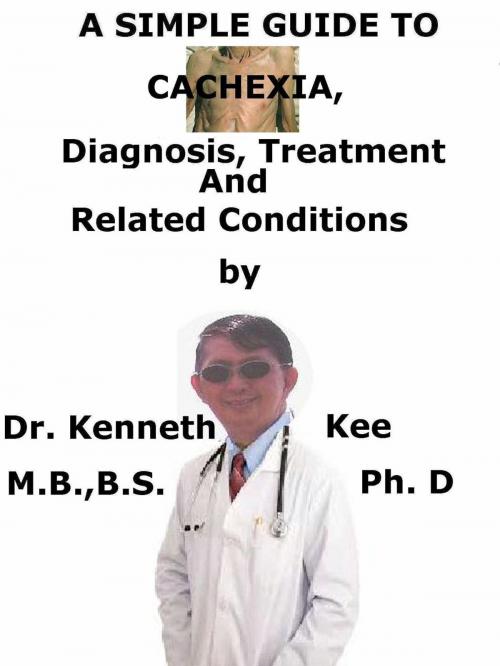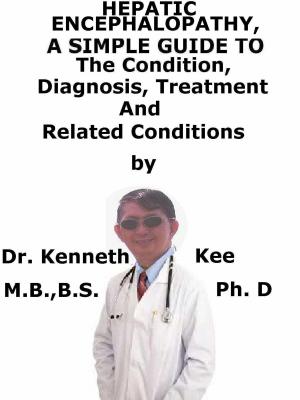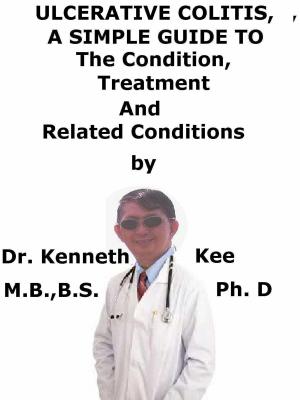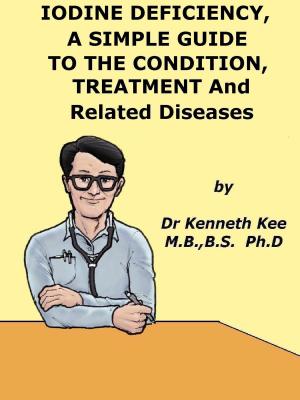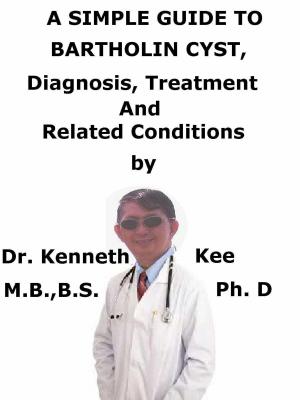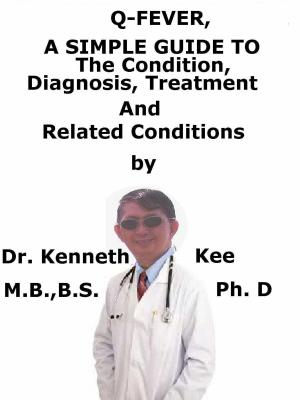A Simple Guide To Cachexia, Diagnosis, Treatment And Related Conditions
Nonfiction, Health & Well Being, Medical, Specialties, Oncology, Health, Nutrition & Diet, Nutrition| Author: | Kenneth Kee | ISBN: | 9781540129413 |
| Publisher: | Kenneth Kee | Publication: | June 7, 2018 |
| Imprint: | Language: | English |
| Author: | Kenneth Kee |
| ISBN: | 9781540129413 |
| Publisher: | Kenneth Kee |
| Publication: | June 7, 2018 |
| Imprint: | |
| Language: | English |
This book describes the Cachexia, Diagnosis and Treatment and Related Diseases
Cachexia is a medical syndrome that is featured by symptoms of unintentional weight loss, progressive muscle wasting, and a loss of appetite**.**
Cachexia is weight loss and deterioration in physical condition related to serious illness.
Cachexia is not sarcopenia which is due to muscle wasting in old age.
Cachexia is not starvation.
Starvation may be part of cachexia and cachexia may result from starvation but they are different.
Cachexia syndrome is a complicated metabolic process found in many end stage diseases.
This is characterized by the loss of appetite with weight loss and muscle wasting (cachexia).
This affects considerably on quality of life and can cause anxiety and distress for patients, perhaps even more so for caretakers
It is present in at least 50 % of people with advanced cancer
It is believed that it contributes directly to 20 % of cancer deaths.
Even though the symptoms and signs of cachexia are usually noticed late in the course of cancer, the process leading to muscle wasting begins very early on after a diagnosis of cancer.
In such, cachexia is often present before any weight loss occurs.
This is because cachexia is more than just a lack of calories in the body.
Causes:
It is related with various serious illnesses such as:
-
Many types of cancer (particularly of the pancreas, stomach, esophagus, colon and rectum).
-
HIV/AIDS.
-
Congestive heart failure.
-
Rheumatoid arthritis.
-
Tuberculosis, chronic obstructive pulmonary disease (COPD), cystic fibrosis.
-
Crohn's disease.
It is also seen in the elderly, without any apparent associated disease.
Cachexia is sometimes referred to as a paraneoplastic syndrome, which simply means symptoms that are caused by substances made by cancer or by the body's reaction to cancer.
It might seem like cachexia should be easily treated at first glance, but effective treatments are lacking.
There are 2 main types of Cachexia:
Cancer cachexia
An international collaborative has defined cancer-related cachexia thus:
A multi-factorial syndrome defined by an ongoing loss of skeletal muscle mass (with or without loss of fat mass) that cannot be reversed by conventional nutritional support and leads to progressive functional impairment.
The pathophysiology is characterized by a negative protein and energy balance driven by a variable combination of reduced food intake and abnormal metabolism.
Suggestions have been made to modify the definition to include factors such as C-reactive protein (CRP) level and appetite loss.
A four category model has also been proposed - i.e. non-cachexic, ore-cachexic, cachexic and refractory
Ongoing research is helping to refine the definition further
Cancer cachexia impairs quality of life and response to therapy, which increases morbidity and mortality of cancer patients
It is seen in 50% of cancer patients and accounts for at least 20% of deaths
Cardiac cachexia
This is a common complication of chronic heart failure (CHF) which is associated with a poorer prognosis.
It is defined as involuntary loss of 5% of body mass in twelve months or less.
Myofibrillar proteins are degraded and there is also reduced protein synthesis.
Endocrine factors are thought to play a regulatory role
This book describes the Cachexia, Diagnosis and Treatment and Related Diseases
Cachexia is a medical syndrome that is featured by symptoms of unintentional weight loss, progressive muscle wasting, and a loss of appetite**.**
Cachexia is weight loss and deterioration in physical condition related to serious illness.
Cachexia is not sarcopenia which is due to muscle wasting in old age.
Cachexia is not starvation.
Starvation may be part of cachexia and cachexia may result from starvation but they are different.
Cachexia syndrome is a complicated metabolic process found in many end stage diseases.
This is characterized by the loss of appetite with weight loss and muscle wasting (cachexia).
This affects considerably on quality of life and can cause anxiety and distress for patients, perhaps even more so for caretakers
It is present in at least 50 % of people with advanced cancer
It is believed that it contributes directly to 20 % of cancer deaths.
Even though the symptoms and signs of cachexia are usually noticed late in the course of cancer, the process leading to muscle wasting begins very early on after a diagnosis of cancer.
In such, cachexia is often present before any weight loss occurs.
This is because cachexia is more than just a lack of calories in the body.
Causes:
It is related with various serious illnesses such as:
-
Many types of cancer (particularly of the pancreas, stomach, esophagus, colon and rectum).
-
HIV/AIDS.
-
Congestive heart failure.
-
Rheumatoid arthritis.
-
Tuberculosis, chronic obstructive pulmonary disease (COPD), cystic fibrosis.
-
Crohn's disease.
It is also seen in the elderly, without any apparent associated disease.
Cachexia is sometimes referred to as a paraneoplastic syndrome, which simply means symptoms that are caused by substances made by cancer or by the body's reaction to cancer.
It might seem like cachexia should be easily treated at first glance, but effective treatments are lacking.
There are 2 main types of Cachexia:
Cancer cachexia
An international collaborative has defined cancer-related cachexia thus:
A multi-factorial syndrome defined by an ongoing loss of skeletal muscle mass (with or without loss of fat mass) that cannot be reversed by conventional nutritional support and leads to progressive functional impairment.
The pathophysiology is characterized by a negative protein and energy balance driven by a variable combination of reduced food intake and abnormal metabolism.
Suggestions have been made to modify the definition to include factors such as C-reactive protein (CRP) level and appetite loss.
A four category model has also been proposed - i.e. non-cachexic, ore-cachexic, cachexic and refractory
Ongoing research is helping to refine the definition further
Cancer cachexia impairs quality of life and response to therapy, which increases morbidity and mortality of cancer patients
It is seen in 50% of cancer patients and accounts for at least 20% of deaths
Cardiac cachexia
This is a common complication of chronic heart failure (CHF) which is associated with a poorer prognosis.
It is defined as involuntary loss of 5% of body mass in twelve months or less.
Myofibrillar proteins are degraded and there is also reduced protein synthesis.
Endocrine factors are thought to play a regulatory role
